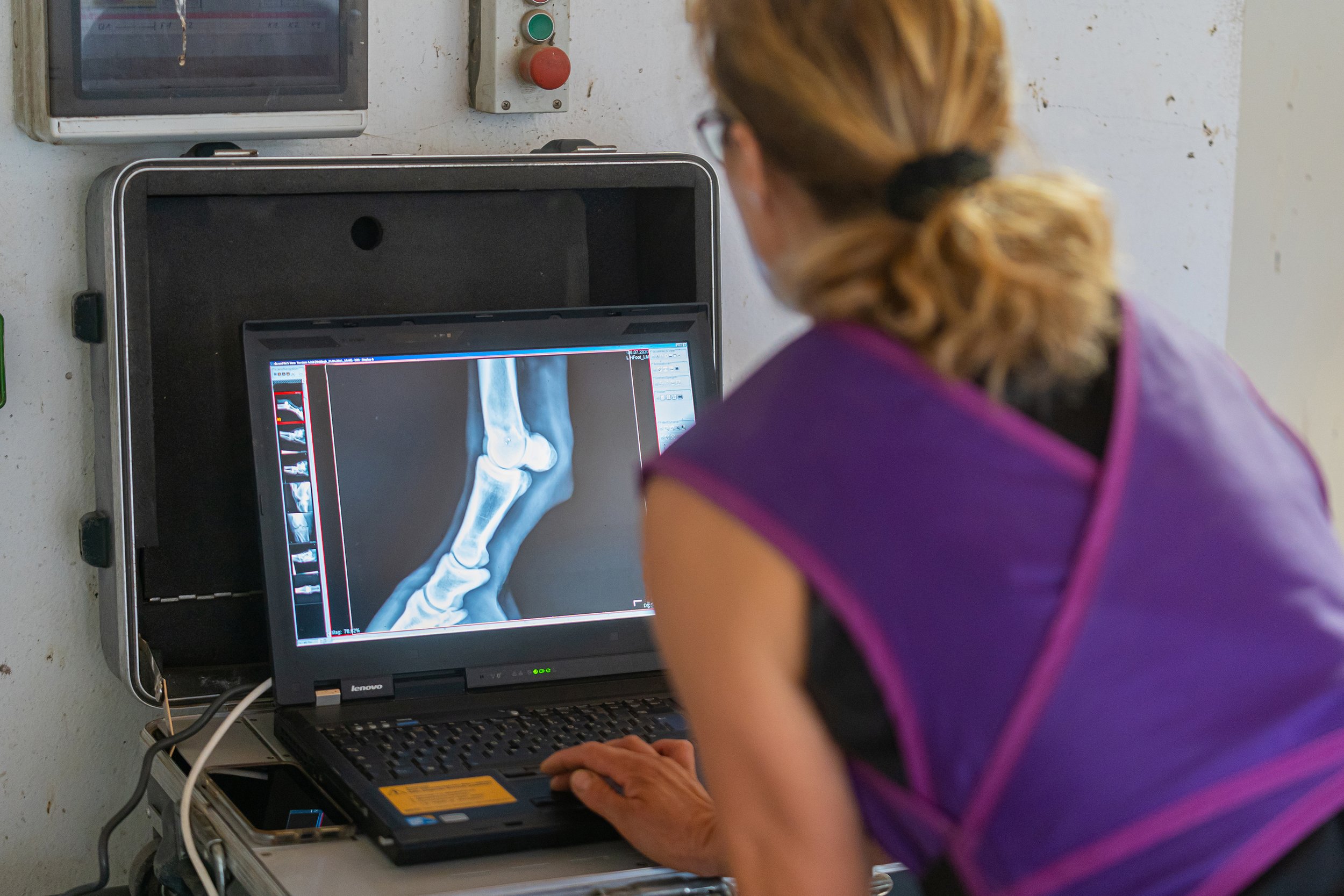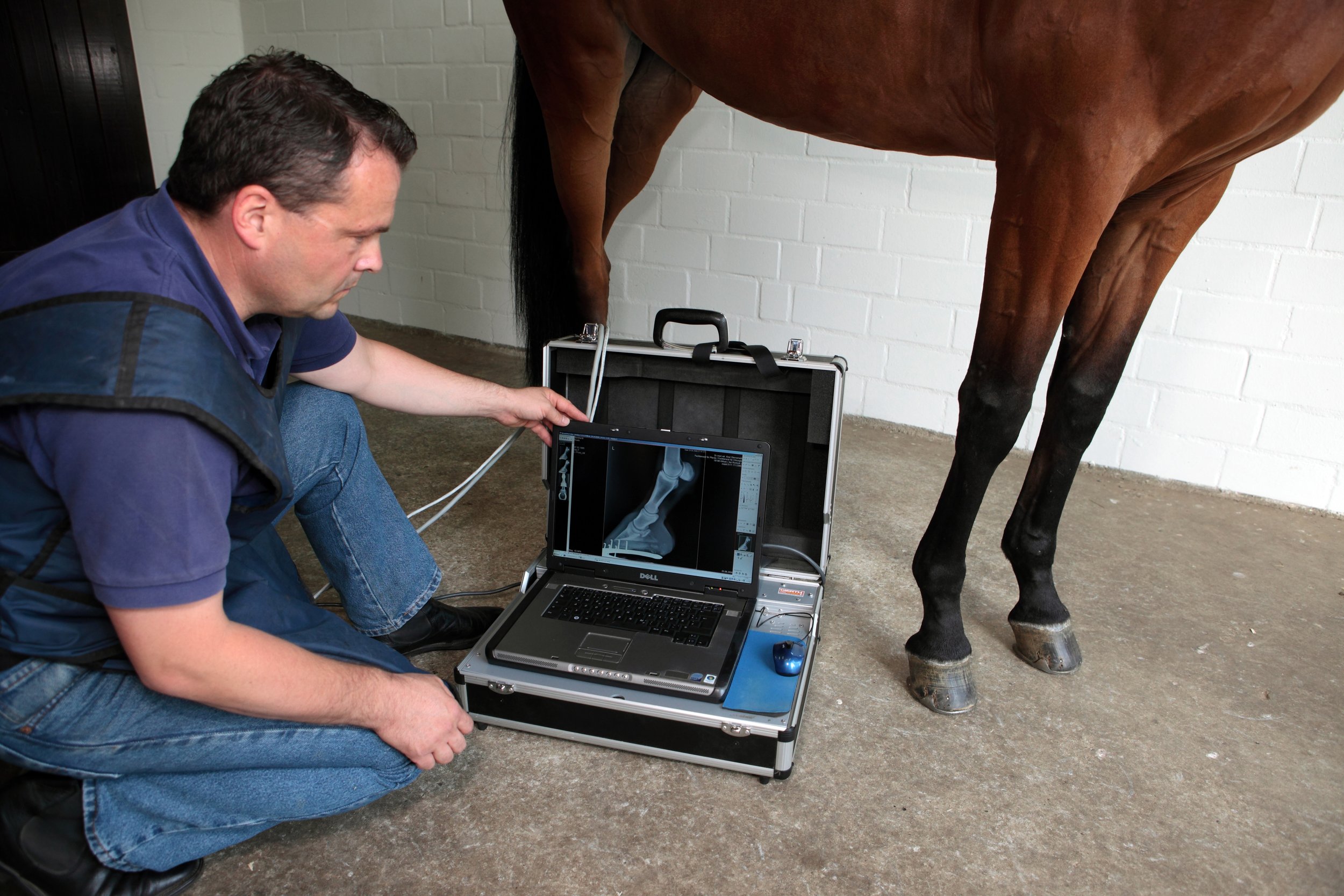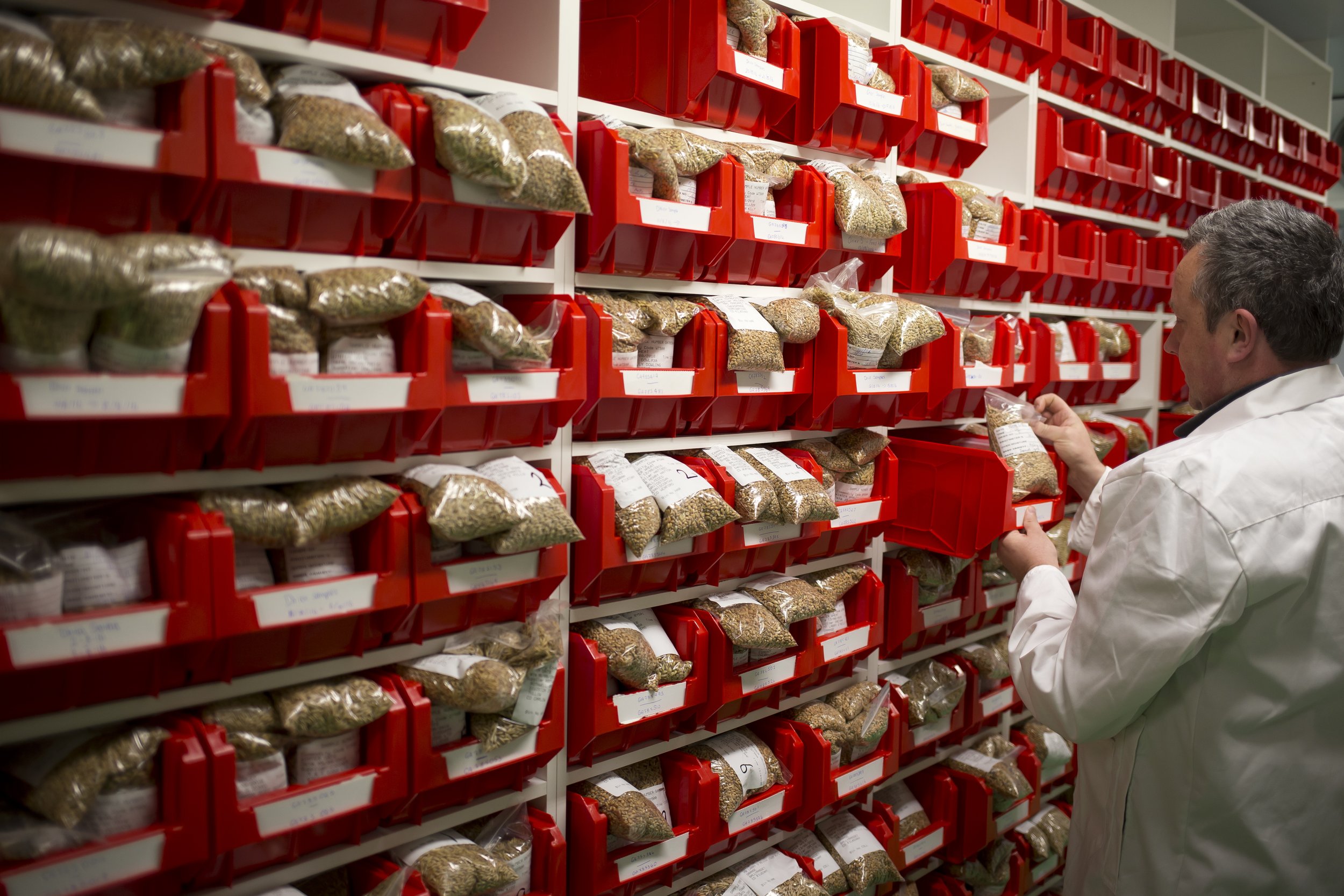Racehorse Bone Health: From a Nutritional Perspective
By Louise Jones
Strong, healthy bones are the foundation for racehorse soundness, but unfortunately skeletal injuries are an issue that every trainer will face. There are many factors involved in the production of strong bones; however, two key factors that we can influence are training and nutrition.
Every trainer knows how important exercise is to ‘condition’ the bones, and we are constantly striving to improve training programmes so that sufficient strain is applied to signal an increase in bone development, whilst not straining the bones to the point of fracture; this is a difficult balancing. Perhaps more fundamental to this is the role of diet in supporting bone density, strength and repair. Even minor nutrient deficiencies or imbalances can mean that the horse doesn’t receive the nutrients it requires for healthy bones and thus increases the risk of potential problems down the track.
Understanding how bone is formed and adapts in response to training, alongside the critical role optimal nutrition plays in these processes, can help to ensure skeletal soundness and minimise the risk of bone-related injuries.
Bone formation & remodelling
Bone formation occurs by a process of endochondral ossification; this is where soft cartilage cells are transformed into hard bone cells. Bone consists of three types of cells and an extracellular matrix. This extracellular matrix is made mainly from the protein collagen, which makes up to 30% of mature bone and is a key element in connective tissue and cartilage. The three types of cells in bone are:
Osteoblasts: These are the cells that lay down the extracellular matrix and are responsible for the growth and mineralisation/hardening of bone.
Osteoclasts: These cells are involved in the breakdown of bone, so that it can be replaced by new stronger bone.
Osteocytes: These cells work to maintain and strengthen when a bone requires modelling or remodelling.
Bone mineral content (BMC) is a measure of the amount of mineral in bone and is an accurate way of measuring the strength of a bone. Interestingly, about 70% of bone strength is due to its mineral content; calcium being the most notable and accounting for 35% of bone structure. A horse’s bones do not fully mature until they are about 5-6 years old. So, whilst a horse will have reached 94% of their mature height when they are a yearling, they will have only reached 76% of their total BMC.
Although it may seem like mature bone is inert, it is in fact a highly dynamic tissue, and BMC is constantly adapting in response to exercise and rest by a process called remodelling.zBone remodelling is a complex process involving several hormones and nutrients. Essentially when mature bone ages or is placed under stress, such as exercise, small amounts of damage occur. This results in the osteoclast cells removing the old or damaged bone tissue. In turn, this triggers osteoblasts and osteocytes to repair the bone by laying down collagen and minerals over the area, thus strengthening the bones. It’s estimated that 5% of the horse’s total bone mass is replaced (remodelled) each year. It should be noted that during the remodelling process, bone is in a weakened state. Therefore, if during this period, the load applied to the bones exceeds the rate at which they can adapt, injuries such as sore shins can occur.
Bone strength & exercise
When galloping, a horse places up to three times its body weight in force on the lower limbs. The more load or pressure put on a bone, the greater the bone remodelling that will need to take place. Ultimately, this will result in new, stronger bones being formed.
Studies have shown that correct exercise can increase bone density in the cannon bone, the knee and sesamoid bones; and this can help reduce the likelihood of skeletal injury. However, the intensity of training is key; low intensity exercise (trotting), whilst essential for muscle development, has been shown to only result in small change in cannon bone density. Whereas training at high speeds for a short amount of time (sprinting), rather than repetitive slow galloping, has shown to result in a significant increase in bone density. This is highlighted in a study using a treadmill where short periods of galloping at speeds over 27mph (43 km/hour) were associated with a 4-5% increase in the density of the cannon bone.
Whilst exercise clearly plays a pivotal role in bone density, doing too much too soon can be disastrous and result in issues such as:
Sore/buck shins: This is a common injury in young racehorses. It is caused by excessive pressure on the bones resulting in tiny fractures on the cannon bone, which may not have fully mineralised (strengthened and hardened). This results in the periosteum (a fibrous membrane of connective tissue covering the cannon bone) becoming inflamed.
Bone chips: Another common skeletal injury in racehorses, mostly seen in joints, particularly in the knee. This is when a tiny fracture occurs in the joint, weakening the bone and ultimately resulting in a ‘chip’ of the bone becoming separated.
When trying to maximise skeletal strength, periods of lower intensity exercise or rest are just as important as gallop work, as they give the bone a chance to remodel. However, prolonged rest will have a negative effect on skeletal health. Research has looked at the loss of BMC in the cannon bone when horses were placed on box-rest (with 30 minutes on the walker) and found overall BMC was reduced. Therefore, even horses returning to work after a short period of 1-2 weeks of box-rest could potentially have a significant decline in bone density and thus be at increased risk of skeletal injury once exercise recommences.
It’s also important to bear in mind that when a young horse starts training, it is normally coming from a 12–24-hour turnout. This is where the horse has the ability to gallop and play. However, once training begins, they are typically stabled from long hours with short intervals of low intensity training. Consequently, bone demineralisation can occur. In addition, during this early stage of training, bone will undergo a significant degree of remodelling in response to exercise. Initially this process makes the bone more porous and fragile before it regains its strength. As a result, research has shown that horses can have reduced bone density during the first few months of training, with bones being at their weakest and the horse more prone to issues such as sore shins between day 45–75 of training.
It should be noted that even when training is carried out slowly, conditions such as sore shins can still happen as bone remodelling occurs at different rates in every horse and is influenced by factors such as track surface and design. While there is some information on exercise and bone development from which to make inferences, a definitive answer as to the perfect amount of exercise to support optimal bone development has not yet been found.
Nutrition & bone health
Exercise is essential to bone health, but nutrition plays an equally important role. Bone is continuously being strengthened, repaired and replaced. And if we can aid bone remodelling with good nutrition, we can decrease the likelihood of skeletal injury. The essential nutrients for bone health are protein, minerals and vitamins, including calcium (Ca), phosphorus (P), zinc (Zn) copper (Cu), vitamins A, D and K.
Protein: Collagen is a protein and forms the bony matrix on which minerals are deposited. Feeding sufficient high-quality protein, rich in essential amino acids such as lysine and methionine, is therefore a key factor in the development of strong healthy bones. When selecting an appropriate feed for horses in training, both the level and quality of the protein it provides should be carefully considered; not all protein is equal.
Calcium & Phosphorus: It is well documented that these essential minerals are the foundation of strong and healthy bones, making up 70% of the BMC. The ratio of calcium and phosphorus in the diet is also very important for bone mineralisation. This is because imbalances in the Ca:P ratio can result in the removal of calcium from the skeleton and may lead to bone demineralisation. The minimum Ca:P ratio in the diet should be 1.5:1, with the ideal ratio being at least 2:1 for young horses. It is important to note that adding other feedstuffs such as chaffs or cereals to the horse’s feed can alter the Ca:P ratio in the overall diet. For example, adding oats, which are high in phosphorus, will reduce the calcium to phosphorus ratio and this may adversely affect calcium absorption. On the other hand, including some alfalfa, which is high in calcium, can help to increase the Ca:P ratio if required.
Copper & Zinc: Copper is an important mineral for bone, joint and connective tissue development. Lysyl oxidase is an enzyme that requires copper. It is responsible for cross-linking of collagen, and therefore copper plays an important role in the formation of new bone which requires a collagen matrix. Similarly, zinc is integrally involved in cartilage turnover; and research has shown that horses supplemented with zinc, as part of a complete mineral package, have increased bone mineral density compared to horses fed an unsupplemented diet. Copper and zinc are frequently found to be low in forage and therefore must be provided in the form of a hard feed or supplement.
Vitamins: A number of vitamins play essential roles in skeletal health. For example, vitamin A is involved in the development of osteoblasts—the cells responsible for laying down new bone—whilst vitamin D is needed for calcium absorption. More recent research has also shown that feeding vitamin K improves the production of osteocalcin, the hormone responsible for facilitating bone metabolism and mineralisation. Furthermore, research in two-year-old thoroughbreds suggests that feeding vitamin K may help increase bone mineral density and thus potentially be beneficial for decreasing the incidence of sore shins. Although standard feed manufactures include vitamin A and D in their feeds, a few also now include vitamin K.
Supplementation for bone health
Young horses in training, those recovering from injury or returning to work following a rest will benefit from additional nutritional support targeted at maintaining improving bone health. In these situations, supplementing with elevated levels of calcium and phosphorus will help improve bone health. Look for a supplement containing collagen, which is rich in type I and II collagen, proteoglycans and glycosaminoglycans—all of which aid the bone remodelling process and help to maintain bone health. Choosing a supplement that also contains chelated copper and zinc, as well as vitamins A and D, will also help support bone mineralisation.
In summary, skeletal injuries have a huge adverse effect on the racing industry and are a common cause of lost training days. Undoubtedly, adapting our training regimes, modifying our gallops and improving our management practices will all help to reduce the risk of bone-related injuries. Equally, the role of nutrition in bone health should not be overlooked. A balanced diet, rich in nutrients, minerals and vitamins, can contribute significantly to bone density and strength. Proper nutrition is an essential parameter of skeletal health, participating in both the prevention and treatment of bone diseases. To achieve a strong, sound skeleton, you must feed the bones.
The Importance of forage testing
Forage (hay/haylage) is an important source of nutrients for horses in training. However, the levels of minerals such as calcium, phosphorus and copper present can vary enormously and depend on factors such as the species of grass and the land on which it was grown. It is recommended that you regularly test the nutritional value of your forage. This will highlight any mineral excess/deficiencies and allow for the ratios of certain minerals such as calcium and phosphorus to be assessed. In most cases, any issues identified can be corrected through using an appropriate hard feed and/or supplement.
Feeding from the sales ring to racecourse
Author - Cath Dunnett
Horseracing’s international sales rings can perhaps be regarded or compared with the professional show circuit. To achieve optimum interest and price, youngsters not only need to be genetically well endowed but must be appealing to the buyers eye. Youngsters need to be in good body condition, ideally fit but not fat with good muscle tone, sufficient topline and a gleaming healthy coat. However the overall ‘picture’ desirable for the sales ring may not be the most appropriate for full training and competitive racing, and so trainers may find themselves needing to resculpture horses in their early days of training.
Yearling Prep
Yearlings are prepared (‘prepped’) intensively for the sales ring. Whilst most yearling prep regimes will incorporate some exercise, this tends to be mostly walking; and yearlings may lack the established and better developed musculature needed for racing. There is also a high reliance on feeding to deliver the ‘sales ring look’.
Prep regimes are often short lived and designed to increase weight and condition relatively quickly, and to produce gleaming coat condition and topline—the latter of which can therefore be based on deposition of adipose tissue or fat, rather than muscle development or hypertrophy.
A prep period typically involves feeding a large amount of high energy, starch-rich feed over a relatively short period of time, typically 6-8 weeks. Research tells us that this prep period is likely to be one of the high risk times for non-glandular gastric ulcers to develop. Large starch-rich feeds, confinement, increased periods of stress and restricted access to pasture or forage are all significant risk factors for gastric ulcers.
Some yearlings will inevitably arrive at the trainer or pre-trainers yard with pre-existing non glandular ulcers, which may require veterinary treatment, or at the very least a sympathetic high forage, low-starch and sugar-based ration for early training. It may be controversial to suggest, but a longer slower period of prep for sales would perhaps allow for a greater contribution from exercise to build muscle, combined with a less intense feeding regime. However, time and economics probably contain too much deviation from the existing model.
Bone Density
Yearlings that move through from studs to sales prep and then into a training yard undergo a very big change in their feed and management that is worthy of consideration. A stud regime and diet are very different to both sales prep and pre-training, in terms of composition and environment. At stud, these young animals spend a large portion of their day at pasture, with a generally small amount of top up feed or balancers to complement the grazing.
A diet, which is typically high in pasture and forage and low in cereals, allows minerals such as calcium to be firmly sequestered in bone, maintaining bone density. In horses on good pasture, this is aided by the high vitamin K1 content of pasture, which is needed to activate osteocalcin involved in the sequestration of calcium in bone. In contrast, with a high-cereal, low-forage prep or pre-training diet—as a result of quite complicated homeostatic mechanisms involving hormones such as parathyroid hormone—calcium can become relatively more mobilised from bone. The characteristic drop in bone density commonly seen in racehorses in the first 60-90 days of training can be the physical result of this phenomenon.
Forage First
Yearlings may come into training on the larger side of perfect for racing; and so it may, at first glance, seem counterintuitive to feed plenty of forage at this time. However, in early training it is a worthwhile exercise, as it establishes good eating habits.
Horses in training often self limit their forage intake, as training progresses and appetite is reduced, which can contribute to problems including inability to maintain condition, gastric ulcers and tying up if the forage intake drops too low. Better to start from a slightly higher intake early on, than to find a horse on a forage knife edge later in training.
Forage, whether hay or haylage, contributes significantly to energy and electrolyte intake and is a particularly rich source of potassium—an important electrolyte for overall metabolism and muscle function. Leguminous forage such as alfalfa/lucerne is highly digestible and so has a reduced effect on gut fill (hay belly). Alfalfa is equally rich in calcium to help buffer the natural mobilisation and loss of calcium from bone during early training.
A couple of kilograms of alfalfa per day complements a more traditional less digestible hay such as Timothy. The added advantage of feeding a decent amount of forage is that the level of concentrate feed needed will also be reduced. Forage provides energy mainly from fibre and so is not generally associated with excitability, with the energy provided being colloquially known as slow-release energy.
A decent amount of forage for a horse in training is about 1.5% of bodyweight; so for a 500kg horse, that’s about 7-8kg or 4 typical slices. For haylage, this needs to be slightly higher to account for its higher water content.
CLICK HERE to return to issue contents.
BUY THIS ISSUE IN PRINT OR DOWNLOAD
4 x print issue and online subscription to European Trainer & online North American Trainer. Access to all digital back issues of both editions.
Your subscription will start with the October - December 2025 issue - published at the end of September.
If you wish to receive a copy of the most recent issue, please select this as an additional order.










